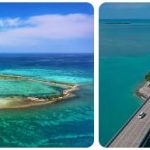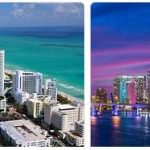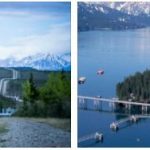According to answermba.com, Florida is a peninsula that extends south-east of the United States of America and is washed by the Atlantic Ocean and the waters of the Gulf of Mexico. Due to its privileged position, it enjoys a warm climate practically all year round, even if rainfall occurs from June to October. Florida is the home of fun from every point of view, both as regards the contact with the uncontaminated nature of the territory and with the crystal clear waters that surround it, and for the countless accommodation activities, among which the famous theme parks stand out.
Tourism is the main source of income, so the residents welcome visitors with great cordiality and sympathy ; considering that there are about 1000 new inhabitants per year who move to this territory, Florida boasts a melting pot of different habits and ways of life, all accepted in everyday life.
The capital of Florida is Tallahassee, a city of nearly 160,000 inhabitants.
Background
According to answerresume.com, Florida was “discovered” by a Spanish explorer who named it Pascua Florida, in honor of Palm Sunday. While joining the Union of States in the mid-1800s, it will be with the construction of the first railway that the State will become an integral part of the rest of the federation and above all it will begin to be a travel destination. Thus began the country’s first tourism industry. At the end of the Second World War, many retirees settle in this warm and welcoming country, joined by Cubans fleeing because they are anti-Castro. In 1970, the opening of the large Disneyworld park gave a great boost to local employment, the economy and the decisive launch of Florida as a tourist destination.
Entertainment
One of the major cities in Florida is Miami. It is a cosmopolitan urban center, which offers beaches frequented by all types of tourists. There is no shortage of trendy districts with boutiques and shopping centers, but next to the district dedicated to Art Deco as well as the characteristic Cuban-style district, Little Havana.
Orlando is another major city in Florida that offers an urban center with museums and historic buildings to visit. However, the city is best known as the home of the most famous playground, DisneyWorld, about half an hour from downtown. Then there is the Sea World nearby, where you can stay in contact with dolphins, sharks and killer whales; the Universal Studio where you can admire the locations of the great films and the Aerospace Center of Cape Canaveral, from which the adventure in space of the Apollo spacecraft also began.
Natural beauties
For those who love fun in the beauty of nature, the coral reef offers the opportunity to dive with unparalleled views of an infinite variety of fish species, as well as dolphins and manatees. In the southern parks, especially in the Everglades islands, colonies of alligators can be seen as well as herons, pelicans, egrets and other species of birds very common in the area. Visitors can indulge in canoeing, kayaking, fishing, bird watching, admiring a very rich subtropical ecosystem.
| NAMED: “The Sunshine State” |
| ORIGIN NAME: It was discovered by Juan Ponce de Leòn in 1513, on Pascua Florida’s day, Palm Sunday, hence the name. |
| CAPITAL: Tallahassee |
| OTHER CITIES: Miami, Orlando, Tampa |
| MEMBER UNION SINCE: March 3, 1845 (27th state) |
| POPULATION: 15.111.244 |
| CAPITAL POPULATION: 191,279 residents |
| COUNTY NUMBER: 67 |
| POOR PEOPLE: 14.4% |
| MOTTO: “In God we trust” |
| TREE: Sabal Palmetto |
| BIRD: Mockingbird |
| FLOWER: Orange Blossom |
| SONG: Suwannee River |
| THE FLAG: On a field of white there is a red X, the Florida flag represents the land of the sun, flowers, palm trees, rivers and lakes. The seal features a shining sun, a cabbage palm tree, steambot sailing, and a Native American Seminole woman scattering flowers. The flag was adopted in 1899. |
| ECONOMY – AGRICULTURE: Citrus fruits, vegetables, livestock, sugar cane, dairy products. – INDUSTRY: Tourism, food processing. |
Florida economy
Florida is one of the major agricultural states of the United States: the main products are citrus fruits (especially oranges), of which Florida is the largest producer in the country; vegetables (especially tomatoes); sugar cane, tobacco, nuts, fruits (watermelons, melons and tropical fruits). Citrus fruits and vegetables grow in south-central Florida, sugar cane south of Lake Okeechobee, while nuts and tobacco are grown in the north. Farming is also profitable: sheep, cattle and poultry are placed on the market every year in large quantities, as is the production of eggs and dairy products.
Florida has a relatively underdeveloped secondary sector, devoid of heavy industries. The main products are those of the food industry, alongside materials for transport, electrical machinery, chemicals, processed metals, paper and derivative products, cigars. The timber industry is relatively small but significant (mostly softwood trees are exploited). Fishing is important, the product of which is one of the highest in the whole of the United States. The main minerals extracted are phosphates (of which Florida is the main producer in the USA), petroleum and natural gas, building materials, ilmanite, sulfur and magnesium compounds.
Florida’s warm winter climate is the main attraction for vacationers from the northeastern United States and Canada. In addition to the numerous beach resorts on both coasts, other places of interest are Cape Canaveral, with the JF Kennedy space center, Walt Disney World, near Orlando, and many other tourist centers. The state has numerous state parks and public green areas.
Florida has an excellent road and rail network; the busiest ports are Tampa-Saint Petersburg, Jacksonville, Port Everglades and Miami. There are many navigable canals, about 390 are airports, including Miami International Airport, one of the busiest in the United States.









